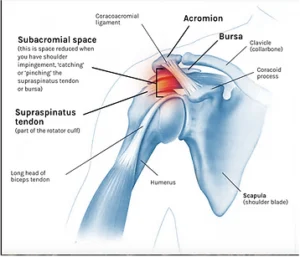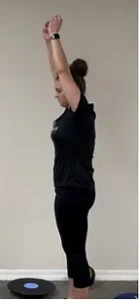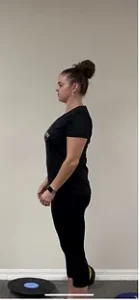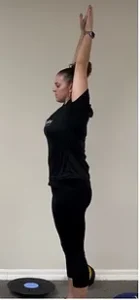Land based drills to enhance a swimmer’s performance
By: Dr. Ashley Kranz
It has been said that swimming is one of the “safest” sports you can participate in. No hard landings, no pounding on the legs while running, no crashing into other athletes while trying to score a touchdown or goal. Basically, just a person moving through water… alone… in their own lane… right?? Swimming is easy… Right??
Well, I wouldn’t say that around too many of your competitive swimmer friends. Although less gruesome looking than players after a rugby match, competitive swimming comes with its own set of injuries and performance dampeners.
Over the next few weeks, we will dive deeper into a few specific regions of the body that if addressed correctly will enhance your performance well beyond your competition.
This first week we will take a general overview of Shoulder Impingement and the Thoracic Spine Region.
According to research up to 91% of swimmers have reported shoulder pain at one time or another over their career1. Other studies note that over 80% of competitive swimmers have been diagnosed with shoulder impingement2.
If shoulder pain is not treated properly and efficiently it can lead to progressive pain, muscle imbalances, compensatory techniques, and possibly even the risk of surgery. On the other hand, the athlete may just stop swimming all together. Any of these “options” mentioned above are not ideal situations. Especially since there is an easy, non-surgical way to fix this nearly inevitable problem.
Below we will discuss simple (yet effective) shoulder and thoracic spine exercises to be performed frequently to rectify this problem.
Why do my shoulders hurt during or after my practice?
There are two types of symptomatic shoulder impingement classification, external impingement and internal impingement.
Today we will discuss subacromial impingement, which is classified under external impingement. For swimmers, subacromial impingement occurs with an increase in muscle fatigue and poor or diminishing technique that arise as a result of this fatigue.
Subacromial Impingement can be described as the pinching sensation of the:
-supraspinatus tendon,
-subacromial bursa,
-long head of the biceps tendon
with shoulder flexion (raising arm overhead). Discomfort is primarily experienced in the anterior or lateral (front or outside) of the shoulder.
Image from: North Wake Physical Therapy3
Impingement could lead to more serious problems involving the rotator cuff muscular, shoulder capsules and bursas, and other muscles and tendons, if not treated appropriately and effectively.
Presentation of subacromial impingement:
-Anterior or lateral shoulder pain
-Pain initially only during practice, but progressing to a dull ache throughout the day due to chronic inflammation
-Pain while bringing arm across the body or overhead (painful arc)
-Weakness of the arm
-Decreased active range of motion
-Pain while sleeping
Click here for a few performance enhancing exercises that could prevent shoulder impingement.
If my pain is only in my shoulder, why do I have to do thoracic spine / upper back exercises?
Good question. Swimmers (and really any athlete that performs repetitive overhead movements) require the ability to fully extend the thoracic spine to avoid shoulder impingement.
Along with thoracic musculature weakness, some swimmers might experience anterior muscle tightness, which can also result in decreased thoracic extension and impingement symptoms. This is called Upper Cross Syndrome.
Try rounding your shoulders and then lifting your arms above your head. It’s not easy, nor comfortable. Now try the same motion while standing tall, squeezing your shoulder blades down and back… a little easier.
Rounded Shoulders (lacking Extension) Standing Tall (Full Extension)
What this experiment demonstrates is a decrease in thoracic mobility and full extension could lead to an increase in shoulder impingement in overhead athletes4.
Click here for few stretches for the pectoralis muscles and exercises for the thoracic region.
If you are experiencing pain, Click here to schedule your FREE phone consultation between you and a Doctor of Physical Therapy.
Reference:
1. Fernandez, Verdugo, Feito, and Rex. Shoulder Pain in Swimmers. Pain in Perspective. Available: https://www.intechopen.com/chapters/40389
2. Sports Health. Epidemiology of Injuries and Prevention Strategies in Competitive Swimmers. 2012 May; 4(3): 246-251
3. Image from: https://www.facebook.com/NorthWakePT/photos/a.243128730570141/316031213279892/?type=3
4. Hunter DJ, Rivett DA, McKeirnan S, Smith L, Snodgrass SJ. Relationship Between Shoulder Impingement Syndrome and Thoracic Posture. Phys Ther. 2020 April 17; 100(4): 677-686.








